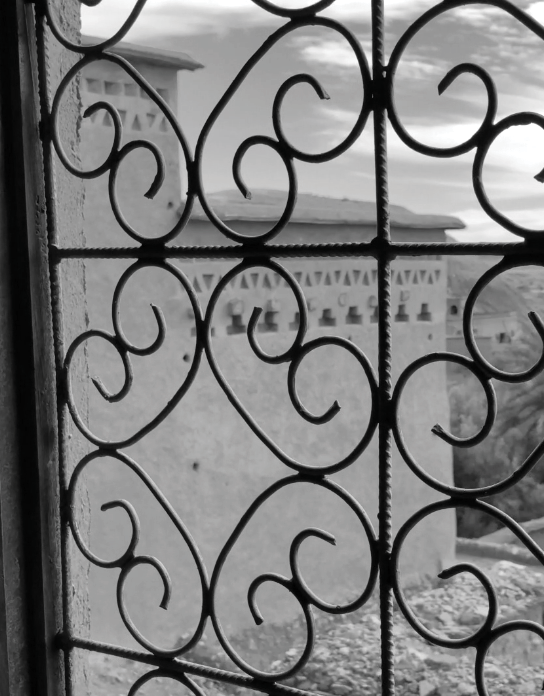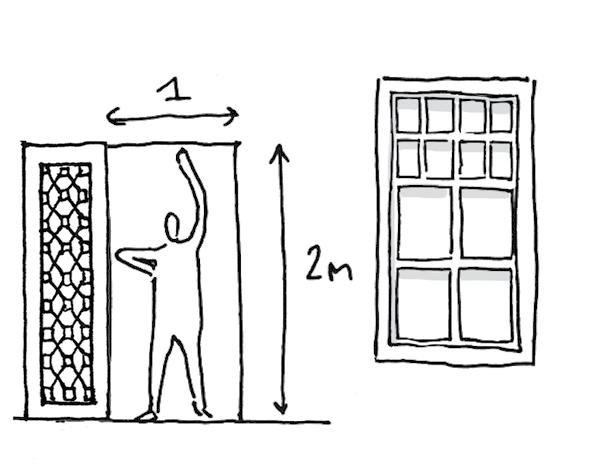…Within the construction process of Design-Build Adaptation, create elements that will reflect the scale of human beings.

__Problem-statement: People need to see their own human scale reflected throughout the environment. This is true at close distances and at long distances as well.__

Even though the Hermitage in St Petersburg is a massive building, a human scale can be easily perceived within it, from the size of its roughly human-sized windows throughout.
Discussion: At close distances, the incorporation of human-scale detail is obvious. We must simply create elements that are the size of human beings or smaller, and easily relatable by human beings: doorways, windows, door handles, and other details. At longer distances, the challenge is greater. It is necessary to use forms that are clearly human-scaled. For example, a window that is approximately 1 meter wide and 2 meters high (roughly 3 feet by 6 feet), extending up from the ground to upper levels of a building, will readily convey a human scale.
The human scales range from 2 m down to ¼ mm, covering the height of a person to the thickness of an eyelash. Our evolution has programmed us to seek out those scales, and discern their interrelationships, in order to navigate and decide upon features in our environment. We subconsciously treat artificial structures in the same way, looking for the human scales at varying distances. If the built environment shows fractal scaling, just like the natural environment, it will include those human scales.¹ Then we feel more “at home” and can concentrate on perceiving attractions or threats directly. If the human range of scales is missing, however, then we cannot feel comfortable in our environments.
__Therefore: Create a generous number of elements that are human-scale, i.e. 1 meter by 2 meters or less. Make sure that many of these elements are structures that people are physically familiar with, e.g. roughly human-proportioned windows, hand-crafted patterns, etc.__

Use Construction Ornament and Complex Materials to enrich the human scale. …
notes
¹ See more at Salingaros, N. A. (1999). Architecture, Patterns, and Mathematics. Nexus Network Journal, 1(1-2), 75-86.
See more Construction Patterns